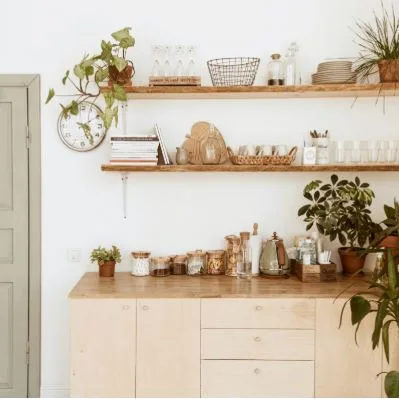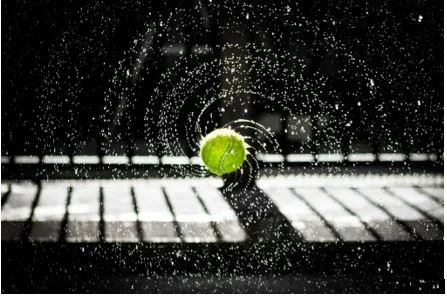Travertine Tiles: An In-Depth Guide to Their Advantages and Disadvantages
Introduction to Travertine Tiles
Travertine tiles are natural stone.Builders use them for flooring and paving.They stand out for their elegant look and solid strength. Travertine has been valued for centuries in building and design.Builders used it in famous old buildings. People love its unique textures. They admire its lasting quality. This guide explains travertine tiles. You will learn their origin. You will understand their traits. You will see their good points. You will see their bad points. This helps you decide if they suit your spaces.
What is Travertine?
Travertine is a sedimentary rock. It is a type of limestone. Mineral springs form it. Hot springs create it most often. Groundwater deposits calcium carbonate. This process makes travertine. Gas bubbles get trapped during formation. This creates its porous texture. Workers quarry travertine in several countries. Italy, Turkey, Iran, Mexico, and Peru are major sources. Each place gives slightly different colors and patterns.
The stone forms naturally. It has an organic, fibrous texture. Fossilized shells and debris are often inside. This gives travertine its special look. Travertine is like limestone’s older cousin. It shares similar minerals. But its structure and appearance are different.
Differences Between Travertine Tiles and Travertine Pavers
Travertine tiles and pavers are the same stone. But they have key differences. Their uses are not the same.
- Thickness: Tiles are thinner. They are usually about 12mm thick. This suits indoor use. They also work outdoors over concrete slabs. Pavers are thicker. also withstands harsh weather outdoors.
- Application: Most people use these tiles indoors. Bathrooms, kitchens, and living rooms are the usual places to find them.Tiles also cover patios or pool areas on solid bases. Pavers are for tough outdoor jobs. Driveways, walkways, and garden paths use pavers. Workers place them on a bed of sand or crushed rock.
- Installation Method:Workers need a flat, stable surface to install tiles. They secure the tiles with mortar.Pavers need more ground work. Workers prepare a base with sand or cement slurry. This gives stability under heavy use.
Advantages of Travertine Tiles
- Timeless Aesthetic Appeal: Travertine tiles look classic and beautiful. Their warm, earthy tones add natural charm. The stone has varied surface patterns. It shows subtle veins and pores. This creates depth and sophistication. Travertine fits old and new designs.
- Durability and Longevity: Travertine is very tough. It handles heavy foot traffic well. It survives outdoor weather when installed right. Its strength gives it a long life. Good travertine lasts decades.
- Heat Resistance and Comfort: Travertine stays cool. This is great in hot weather. It feels comfortable underfoot. Pool areas and patios benefit greatly.
- Design Flexibility: Travertine comes in many sizes and shapes. You can choose different finishes. Honed, polished, tumbled, or brushed are options. This fits many styles. Popular layouts include squares, rectangles, and French patterns.
- Eco-Friendly: Travertine is natural stone. It forms slowly in nature. No chemicals are needed to create it. Mining and processing cause less harm than making artificial tiles.
- Good Grip: Travertine offers slip resistance. Honed or tumbled finishes work best. These finishes reveal the stone’s natural texture. This texture provides grip. Wet areas like bathrooms and pool decks become safer.
- Adds Value: Travertine tiles increase property value. They look elegant. They last many years. Their natural beauty signals quality. Buyers often find this appealing.
- Versatile Colors: Travertine comes in neutral shades. Ivory, beige, silver, white, and earth tones are common. These colors fit both classic and modern decor easily.
Disadvantages of Travertine Tiles
- Scratches Easily: Travertine is softer than granite. Polished surfaces scratch and etch quickly. Heavy traffic areas show wear sooner. Honed or tumbled finishes hide marks better. But damage can still happen.
- Stains Quickly: Travertine is porous. It absorbs liquids. Spills cause stains if not wiped fast. Sealing protects against oil or wine stains. Outdoor tiles need sealing more often.
- Slippery When Polished: Polished travertine gets slick when wet. This is risky in bathrooms, kitchens, and near pools. Honed or tumbled finishes are safer choices.
- Higher Cost: Travertine is a premium stone. It costs more than ceramic tiles. Installation needs skilled workers. Proper laying and sealing add extra expense.
- Needs Regular Care: Travertine requires maintenance. Frequent sealing is essential. Sealing fights stains and weather damage. Skipping sealing causes harm. It shortens the stone’s life.
Detailed Properties and Characteristics of Travertine Tiles
- Composition and Formation: Travertine is mostly calcium carbonate. Mineral-rich water deposits it in springs or caves. This creates natural pits and holes. These give travertine its unique feel. Workers may fill pits with resin or grout. This depends on looks and use.
- Surface Finishes:
- Polished: Smooth, shiny surface. It enhances color but is slippery.
- Honed: Smooth matte finish. It resists slips well.
- Tumbled: Weathered look with soft edges. It offers good grip.
- Brushed: Slightly rough surface. Brushing creates texture for more grip.
- Sizes and Patterns: Travertine tiles come in many sizes. Small mosaics to large slabs exist. 610 x 406mm rectangles are popular. Modular sizes fit French patterns. This allows creative designs for any space.
- Installation Methods: Indoor tiles go on flat concrete. Workers use adhesive mortar. Outdoor pavers need a strong base. Compacted sand or crushed rock works best. Sometimes workers use cement slurry for extra hold.
Applications of Travertine Tiles
- Indoor Uses: Travertine tiles work great inside. They look refined. They help control indoor heat. Common uses include:
- Bathrooms and showers
- Kitchen backsplashes and floors
- Living rooms and hallways
- Feature walls and fireplaces
- Outdoor Uses: Travertine handles weather well. It stays cool. It’s perfect for:
- Pool surrounds
- Patios and terraces
- Garden paths and courtyards
- Driveways and walkways (use thick pavers)
Care and Maintenance of Travertine Tiles
Proper care keeps your tiles looking great. Follow these steps:
- Seal the tiles every 1-3 years. This prevents stains.
- Clean with pH-neutral stone cleaner. Avoid acidic products.
- Wipe spills immediately. Quick action stops stains.
- Avoid dropping heavy objects. This prevents chips.
- Check tiles often for damage. Fix problems quickly.
Comparing Travertine to Other Natural Stones
Travertine has unique qualities next to marble, granite, or slate.
- Marble: Looks more luxurious. But it stains and etches more easily than travertine.
- Granite: Is harder and less porous. Its appearance differs greatly from travertine.
- Slate: Usually appears darker and rougher. It feels cooler than warm-toned travertine.
Travertine’s warmth and texture make it popular. Its slip resistance adds to the appeal. People choose it for both beauty and safety.
Conclusion
Travertine tiles are a strong choice for homes and gardens. They blend natural beauty, strength, and comfort. Their timeless look works indoors and out. Practical benefits include heat resistance and slip safety.
But consider the downsides. Cost, upkeep, and vulnerability to marks matter. Choose finishes wisely. Care for the tiles properly. Then travertine becomes a stunning, lasting surface. It adds value and class to any place.
Travertine tiles are a great investment. They offer natural charm with modern usefulness. They balance beauty and function perfectly.



